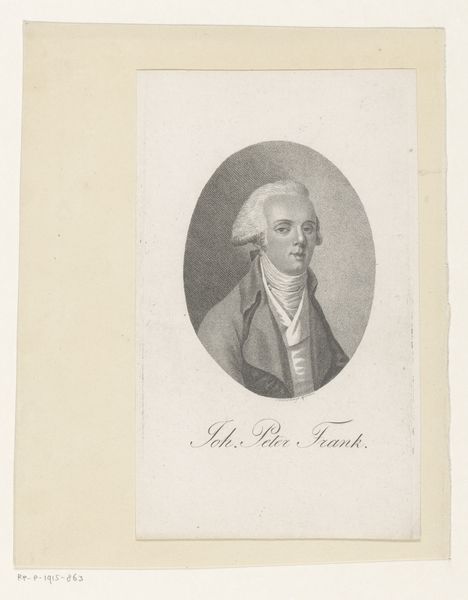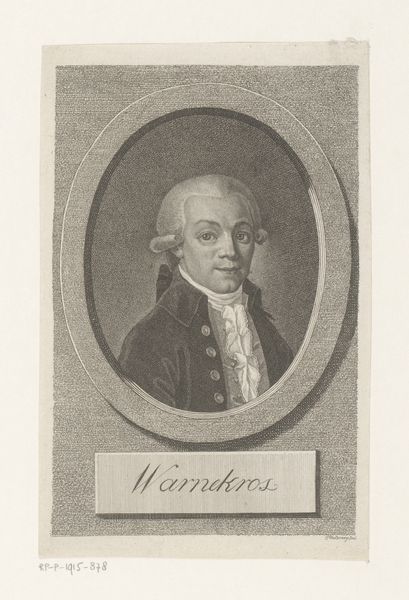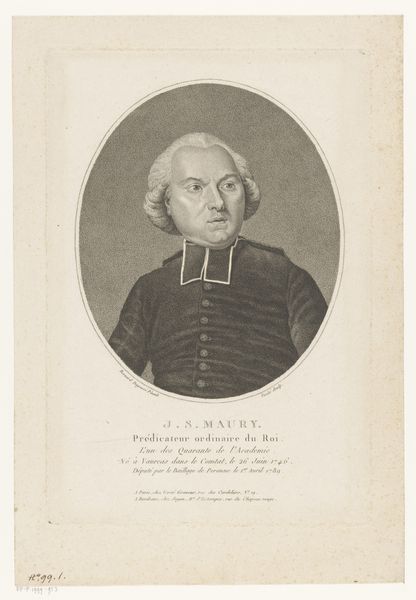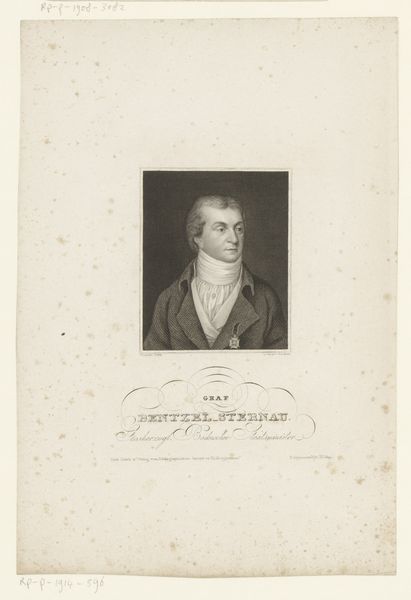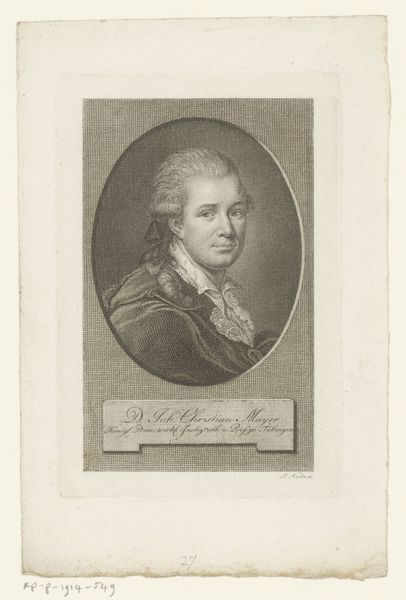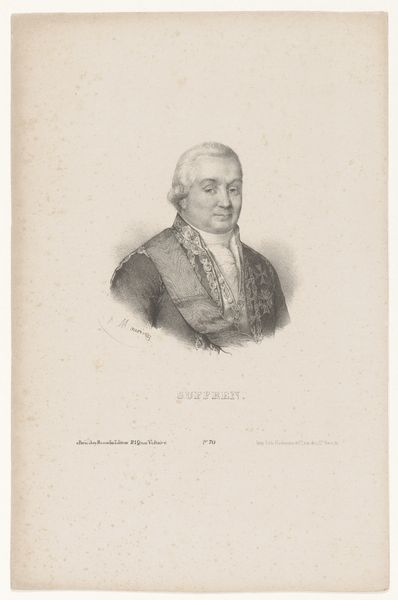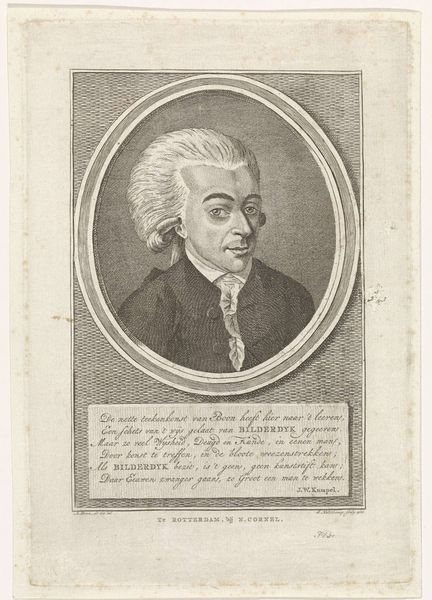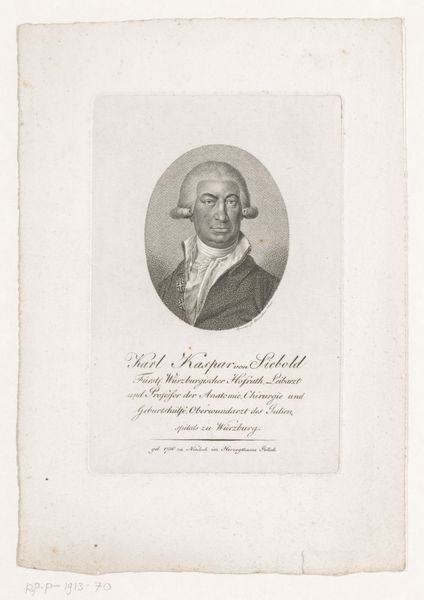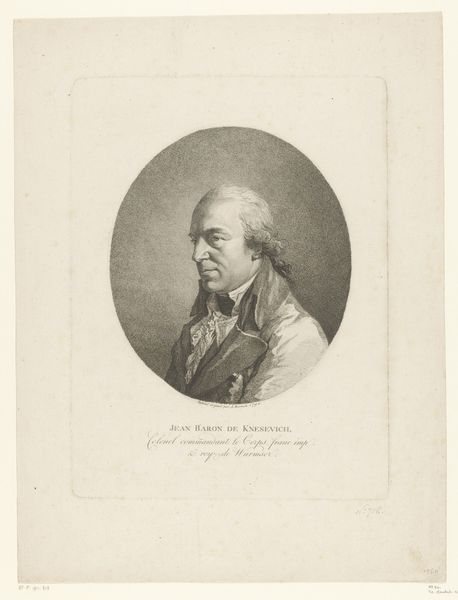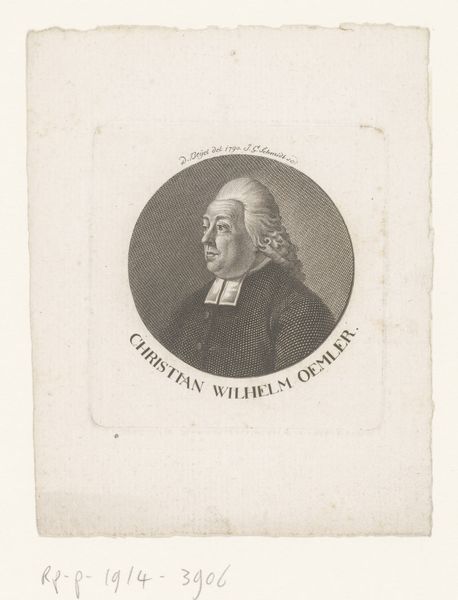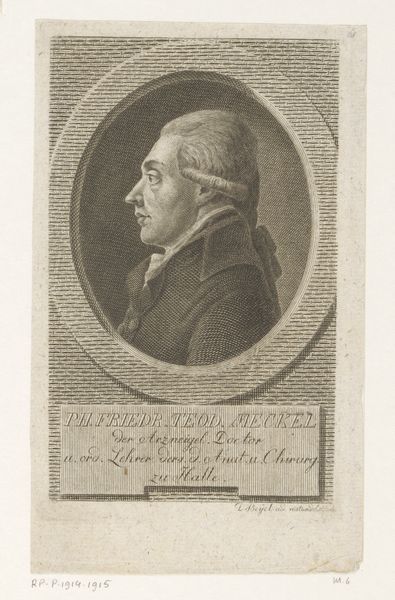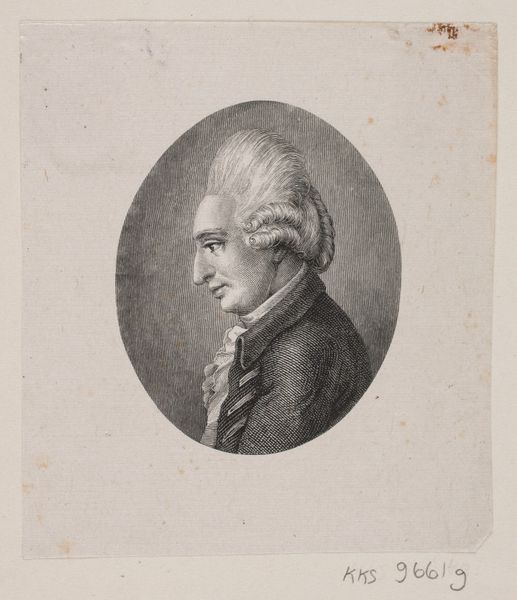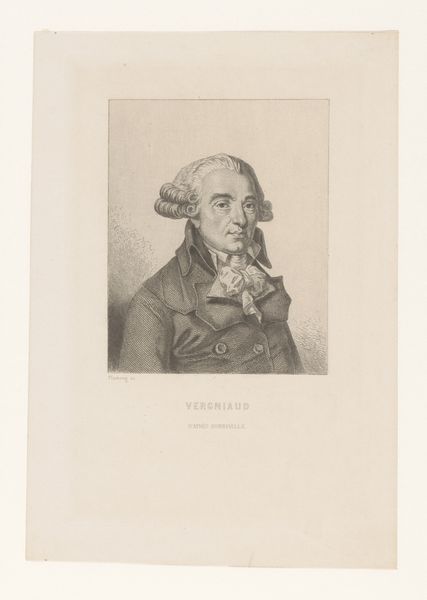
Dimensions: 130 mm (height) x 90 mm (width) (Plademål)
Editor: Here we have a print by Marie Jeanne Clemens, created between 1755 and 1791. It's an engraving, a portrait of Johan Herman Wessel. The overall impression I get is one of formality, but there’s also a hint of intellectual curiosity in his gaze. How do you interpret this work, particularly in its historical context? Curator: The formality you observe speaks to the societal structures of the time, doesn’t it? Portraiture in this period, especially of intellectuals like Wessel, served to reinforce the existing power dynamics, showcasing status and education. But let’s consider Clemens’s position as a woman artist working within those constraints. Do you see any subversion of those established norms in her rendering of Wessel? Editor: That’s interesting, I hadn’t thought of that! It’s very subtle, but perhaps there’s a slightly softer, more human quality to the portrait than you might expect. It isn't idealized; it feels almost… real. Curator: Precisely. And that "realness," as you say, is crucial. Clemens captures not just Wessel's likeness, but also suggests his character, hinting at the spirit of intellectual discourse brewing during the Enlightenment. How do you think this portrait speaks to issues of identity and representation within that specific socio-political framework? Editor: It's like Clemens is subtly humanizing Wessel, potentially challenging the strict, often hierarchical, expectations of Baroque portraiture. Curator: Yes, absolutely. And beyond that, let’s think about who had access to these images. Prints like this circulated among a specific social class, furthering discussions on identity, philosophy, and the arts, although often excluding other voices from the conversation. The act of portraiture was almost an affirmation of membership in a social intellectual cadre. Editor: That makes me think about the power dynamics inherent in artistic representation, and who gets to be seen, and how. Curator: Indeed. Thinking about Clemens' position as a woman in this context invites important questions regarding how gender and social status influenced art production. So, in engaging with this image, it encourages a multifaceted reflection on cultural history and the representation of identity. Editor: I see so many more layers in this work now! Thank you!
Comments
No comments
Be the first to comment and join the conversation on the ultimate creative platform.

